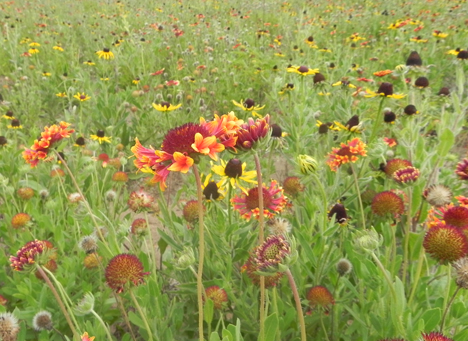
Bees, beetles, flies, butterflies and moths play an important role in our natural environment
From the FWC – By Stan Kirkland, FWC
There’s a growing movement in Florida, and the rest of the country, for that matter, to recognize the crucial value of pollinators and the role they play in agriculture and forestry.
Pollinators include insects such as bees, beetles, flies, butterflies and moths, and other wildlife species such as birds and bats.
“Pollinators are absolutely crucial to the things we eat and, in some cases, what we wear,” said Arlo Kane, a wildlife biologist with the Florida Fish and Wildlife Conservation Commission (FWC). “Pollinators move pollen between flowers and this annually accounts for the production of $20 billion worth of vegetables, fruits and nuts.”
Kane was one of seven speakers at a June 21 pollinator short course in Marianna. In addition to the FWC’s presence, the 150 participants who attended were hosted by the U.S. Department of Agriculture – Natural Resources Conservation Service (NRCS), National Wild Turkey Federation, University of Florida – IFAS, and The Xerces Society for Invertebrate Conservation.
Unfortunately, pollinators, and particularly species of insects, are in decline across the country, according to Kane. There are 4,000 species of bees alone that are native to the United States and most have disappeared or are only a fraction of their original number.
A National Academy of Sciences report says the decline in pollinators is due to habitat loss, diseases and widespread pesticide use.
To stem the loss of pollinators, there’s an emphasis to get gardeners, homeowners and landowners to help by planting wildflowers and plants that are good for native bees and other insects.
“The plants should be native to our area, which means they’ll likely require less fertilizer or water than plants from other parts of the country,” Kane said. “You also need a variety of plants so you have flowering plants from the spring into the fall.”
Suggested areas for planting native wildflowers include the borders or edges of farm fields; in between the rows of planted pines; roadsides; and gardens.
Kane said native wildflowers and the insects they attract are also great habitat and feeding areas for wildlife such as bobwhite quail, wild turkeys, mourning doves and gopher tortoises.
Information about Florida’s native wildflowers is available at local plant nurseries and online at flawildflowers.org or xerces.org.
